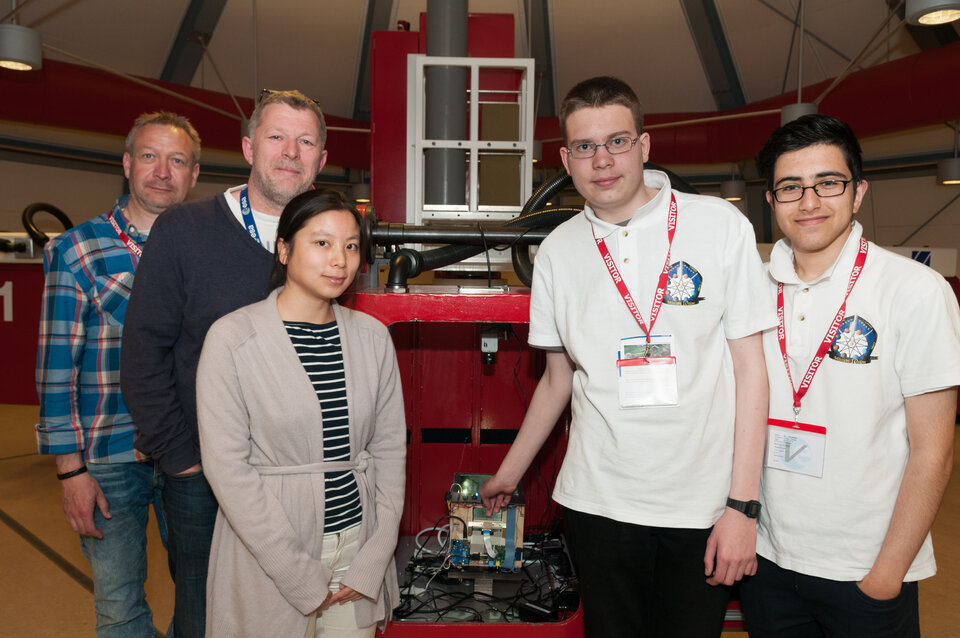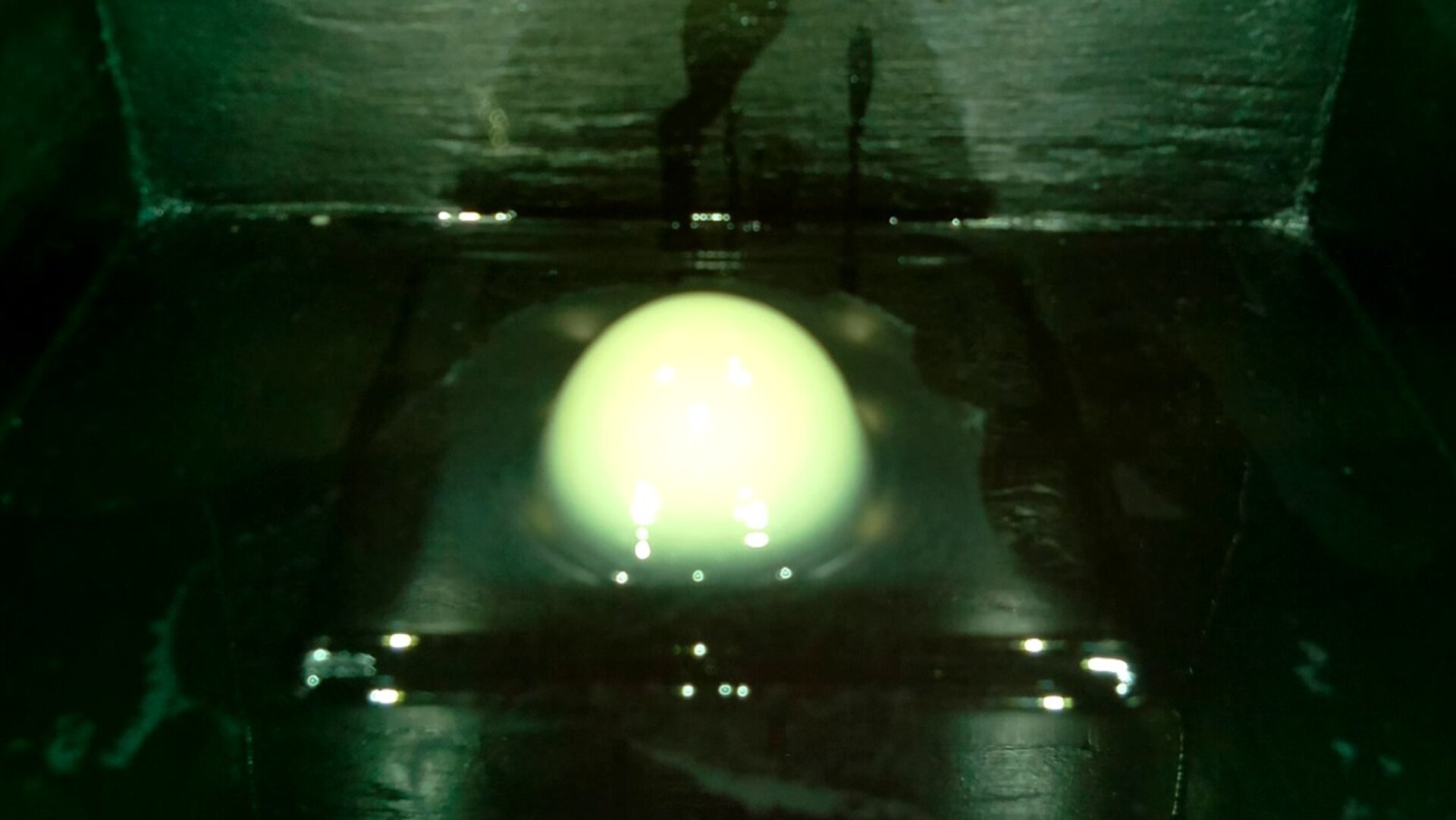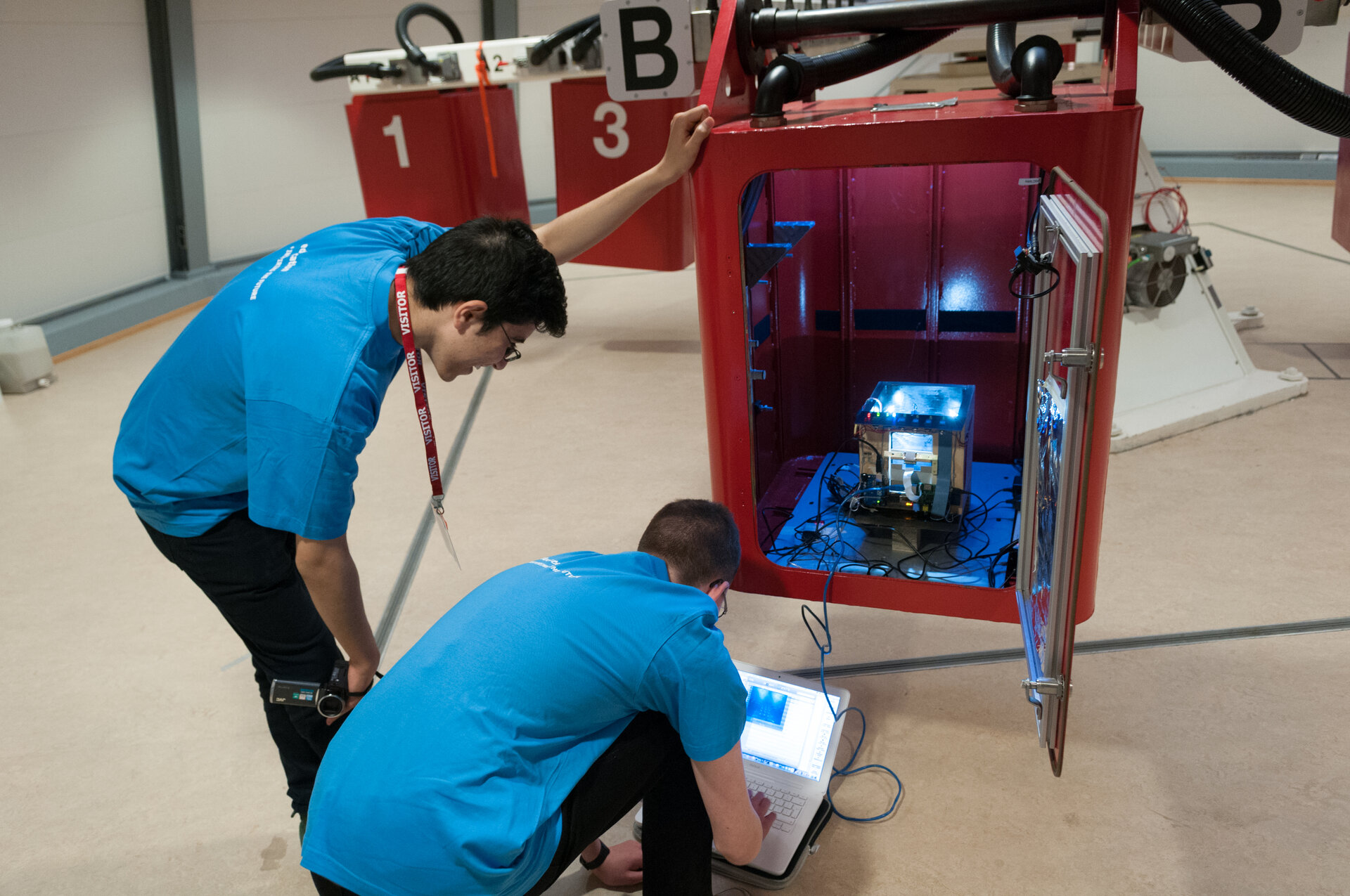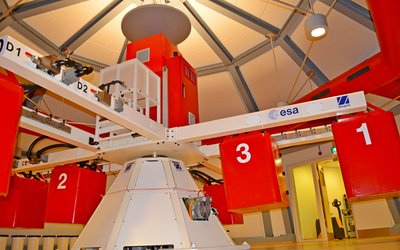From melting ice cream to hypergravity experiments at ESA
It started with a bowl of ice cream and ended with a hypergravity experiment at one of ESA’s world-leading research establishments. Two high-school students captured time-lapse movies of ice cubes melting in different gravitational forces as part of their project, “A Place in Space”.
Arthur Admiraal and Jawad Nikrawesh, two 4th grade students from the Northgo College, Noordwijk, The Netherlands, ran their experiment in the 8-metre-wide Large Diameter Centrifuge (LDC) at ESA’s European Space Research and Technology Centre (ESTEC). This world-class facility can simulate gravitational fields up to 20 times the pull of gravity at Earth’ surface.
This is the 10th year in a row that science-orientated high-school students aged 15-16 from Northgo College prepared a ’space mission’ lasting for 24 hours. During the mission the class was divided into groups such as astronauts, ground control, public relations, and acquisition. Each had their own tasks to perform. The students that played the role of “astronauts” conducted experiments in a converted caravan, which served as their own ‘space shuttle’.
Admiraal and Nikrawesh were inspired to propose their space mission experiment when one of them wondered what ice cream would look like if it were spun while melting. To include the experiment in their school space mission, they came up with the idea of taking time-lapse movies of melting ice cubes. This would allow them to study the melting process of different material in different gravity levels.

Their first hypothesis was that ice cubes made out of tap water would melt in increased gravity just like in normal Earth’s gravity. Their second hypothesis was that in increased gravity the shape of a more viscous ice cube would flatten more as it melted away.
For four months the students built and tested an experimental set-up that used a Raspberry pi computer with a time-lapse camera focused on the 4x4x4cm3 ice cubes. Beneath the ice cube’s platform they connected 9 temperature sensors. With data in hand, they wrote a computer programme to model the way in which the temperature changed in the ice cube as it melted.
Then they came up with their next challenge: they would subject the ice cube to different levels of gravity using a centrifuge to see what changes occurred.
They were busy designing and building a small centrifuge when their teacher contacted engineers from ESA Technical Directorate to discuss the possibility of using the LDC. Intrigued by the ambition and determination of the students, the engineers offered them, with the support of the ESA Education Office, the chance to run their experiment on the LDC.
On the 6th of May, the two high-school students and their teacher were invited to ESTEC to present their project to ESA experts and perform their hypergravity experiment. They melted ice cubes made from water and others made from peanut oil under conditions of gravity four times larger than Earth’s normal. In addition to investigating their hypotheses, they saw that at ‘4g’, the tap water ice cube took around 3 hours to melt. The peanut oil was much faster at 1.5 hours. The process was captured in a time-lapse movie, in which each frame was separated by 3 seconds.

Because they had time left, they re-ran their experiment two more times. In the first re-run, they melted a peanut oil ice cube at 6g, and then a smaller peanut oil ice cube at 4g. They are now analysing their data and movies to test their two hypothesis and to model the influence of increased gravity on the melting process of the ice cubes.
“It is always wonderful if your students do something extraordinary,” says their teacher.
Without doubt, this was an extraordinary opportunity. Afterwards, one of the students said, “It was an unforgettable experience. I hope I will come back to perform experiments in the future.”
Unfortunately, not every school student can use a world-class ESA facility for project work, but all can take inspiration from the natural world. So next time you are eating ice cream, look at it as it slowly melts in the bowl and remember that scientific curiosity knows no bounds.
Read the final experiment report here.


Access the video





